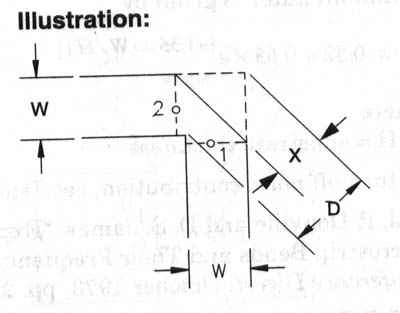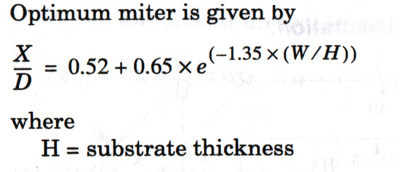Main
· Science
· Instrument
· Backend
· Channelizer
· Design
· Software
» Transmission line
· Power Splitter
· Bandpass Filter
· Mixer
· Amplifier
· Jumper
· SMA Connector
· Enclosure
· Fabrication
· Performance
· Future Revisions
· Correlator
· Receiver
· Optics
· Data Acquisition
· Local Oscillator
· Base
· Analysis
· Results
· Publications
· Team
Transmission lines are the most fundamental element in any circuit. The most important number for a transmission line is it's characteristic impedance. For a lossless line, the impedance is completely real, that is the current and the voltage at every point on the line is in phase. It is give simply by (L/C)^1/2, where L and C are the inductance and capacitance per unit length. There are many different types of transmission lines, and each have different relationships between physical parameters and the characteristic impedance. We used mostly microstrip lines. The only exception is the jumper, where we used striplines. Long ago somebody decided that all microwave devices would have 50 Ohm ports, so all transmission lines have to be matched to 50 Ohms.
There are many formulas used to calculate the relevant parameters for transmission lines. Almost any microwave textbook will list them, for instance Pozar pg 150 sec 3.8.
To evaluate these equations, we used MathCAD. The MathCAD file is: impedencefinder.MCD
There are only 2 parameters involved in these equations, the dielectric constant and the Width over the depth of the dielectric, or W/d. For epsilon=2.94 and d=30 mils and Z=50Ohms, we get W = 76.7 mils.
There are other parameters, such as conductor thickness, resistivity, and loss tangent of the dielectric. These all serve to modify the impudence equations and introduce loss. These effects are best analyzed by the simulator, which we did and showed that they are all small.
Bends
At some point in a circuit, you will have to turn a corner. All corners will produce reflections which can be reduced by rounding or ""chamfering" (mitering) the corner. It turns out that mitering is better than rounding. We used ADS to come up with the optimal miter, but display the equations below for reference.


Full page scan of miter drawing
Full page scan of miter equations with references.